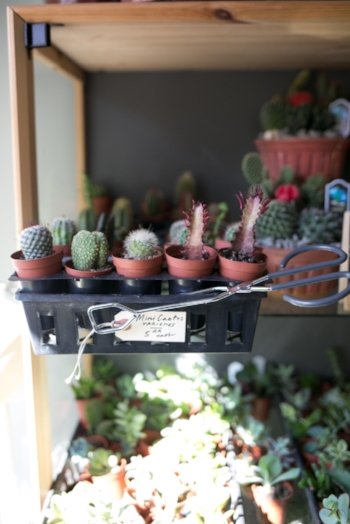Helpful Tips for New Plant Parents
We’ve overheard some nervous new plant parents ‘round the shop and thought it might be worth a post in the Potting Shed to provide some advice on how to keep your new plants happy and thriving. We believe anyone can be a successful plant parent simply by following these basic rules of thumb.
Get the Light Right
The correct amount and type of light is arguably the most important part of plant parenthood. Plants use light for a process called photosynthesis to make chlorophyll, which is the life blood (literally, it’s similar in cell structure to our blood) of plants. All plants depend on this process, even carnivorous and parasitic plants that depend on other living things for nutrients. Here’s a run down of the basic types of light houseplants need.
A south facing window with some shade provided by curtains or blinds is perfect for a plant with low to moderate light needs.
Low light. Low light means shade. It also means never put the plant in direct sunlight. Too much light can cause the leaves to crust and yellow (aka plant sunburn) and the soil to dry out. To avoid the silent screams of “it burns us” from low light plants, place them in a room with a north facing window or on a dim shelf.
Moderate light. A step up from low light. Plants in this category will like some sun, but not long periods of direct sunlight, say more than 4 hours. Keep them out of west facing windows, as afternoon sun is the most intense. An east or south facing window is best.
High light. Grab your sunnies, these guys love light. Here we are talking plants like cacti and succulents. An east or south facing window is great for these guys. A west facing window works too, just keep an eye out that it doesn’t get too hot, especially in the summer.
Direct versus Indirect Light. Most plant instructions mention something about direct and/or indirect light. You can learn more about this important concept explained beautifully by Darryl Chang of House Plant Journal.
Cacti and succulents are great plants for a west facing, sunny window. Mix and match with our mini cactus selection to create a fun terrarium, right in our shop!
Set a Schedule
Aside from light, water is the other most vital source of life for plants. This is also where most plant parents run into trouble, even the most experienced. It can be tough to replicate water and nutrients as Mother Nature would have it, but here are a few quick tips on getting pretty darn close.
Take time out. Plan a weekly day and time to check on your plants. Depending on how many you have this could be 2 minutes a week or 5 minutes a day. Either way, make the time and stick to a routine. Plants are perfect for a moving mediation… #selfcare
A good moisture tester and the right food are invaluable tools to a plant parent.
Use the soil as your guide. The most common cause of death for houseplants is overwatering. They simply don’t need as much water as we often think they do. Therefore, water your plants based on how dry the soil feels. Stick your finger in the soil and if it’s dry up to your first knuckle, give it a drink. You can also purchase a moisture tester, a handy little thermometer type device, from the shop to help determine how dry or wet your soil is.
Make some mornings misty. Many common houseplants are tropical (think: rainforest) and will enjoy a light misting on their leaves from time to time, especially in the summer. Do not try this with cacti and succulents though, they prefer to be dry. Too much water for them causes problems like rot and fungus.
Most houseplants appreciate a good misting every now and again. We have several different types of misters to choose from in stock.
Feed sparingly. You can add plant food or fertilizer to your watering schedule, but do so sparingly. Much like watering, we often think our plants need more food than they really do. Give a good dose of fertilizer (we have different types for different plants in the shop, just ask!) in the spring as the plant enters active growing season. All you need to do is follow the instructions on the package.
Tidy up. Keeping your plants clean is the best way to prevent disease and pests. It also encourages new growth. As you do your watering routine, check your plants for abnormalities and/or bugs and remove any dead foliage. You can also wipe down the leaves of your larger plants, if you have some, with a wet paper towel.
Start Small
One last little leaflet (see what we did there?) to share. Pick a low maintenance plant to begin your parent planethood journey, like a snake plant. See what works for you and your home before you invest a lot of time and money into plants and accessories. Remember, you can’t be everything to everyone, including plants. You’re not chocolate.
Sansevieria, commonly known as "snake plant" and "mother-in-law's tongue" is a great, low maintenance plant to begin your plant parenthood journey. Check out the storefront for different varieties we have available.
All in all, plant parenthood is fun and rewarding. If you can get the light, water and maintenance right, you can expect to have a long-time household friend - that doesn’t talk back or need to go out to go to the bathroom, how nice!
Do you have a rule of green thumb you’d like to share? Comment to let us know what works for you!


